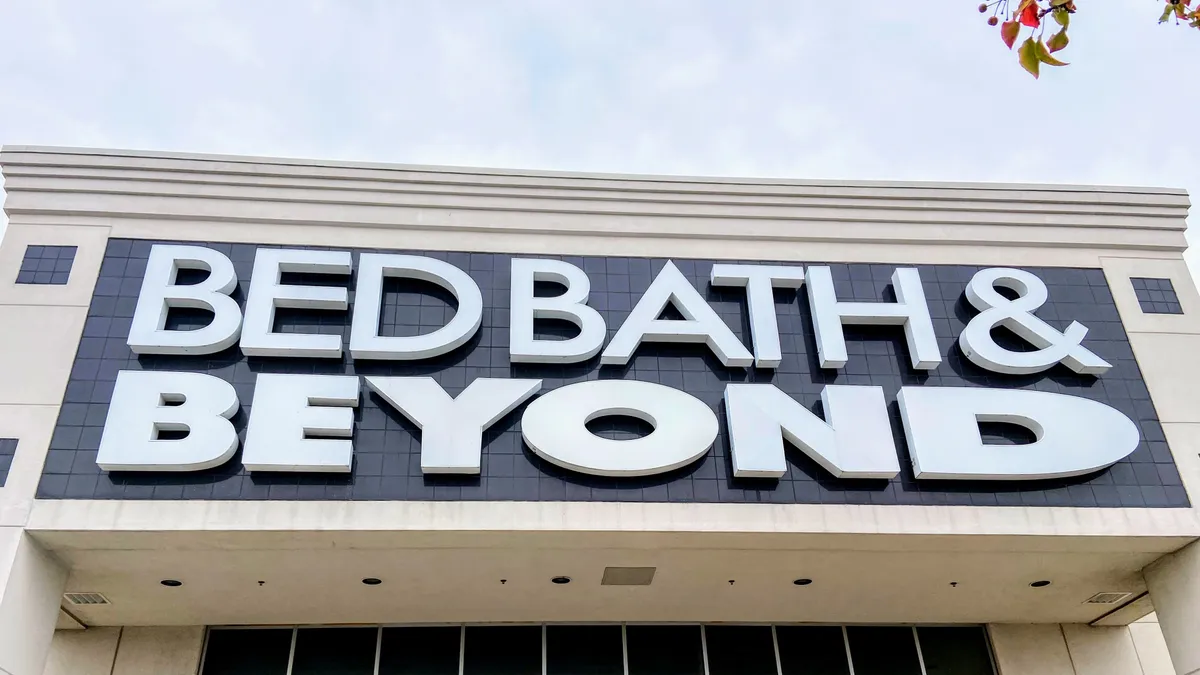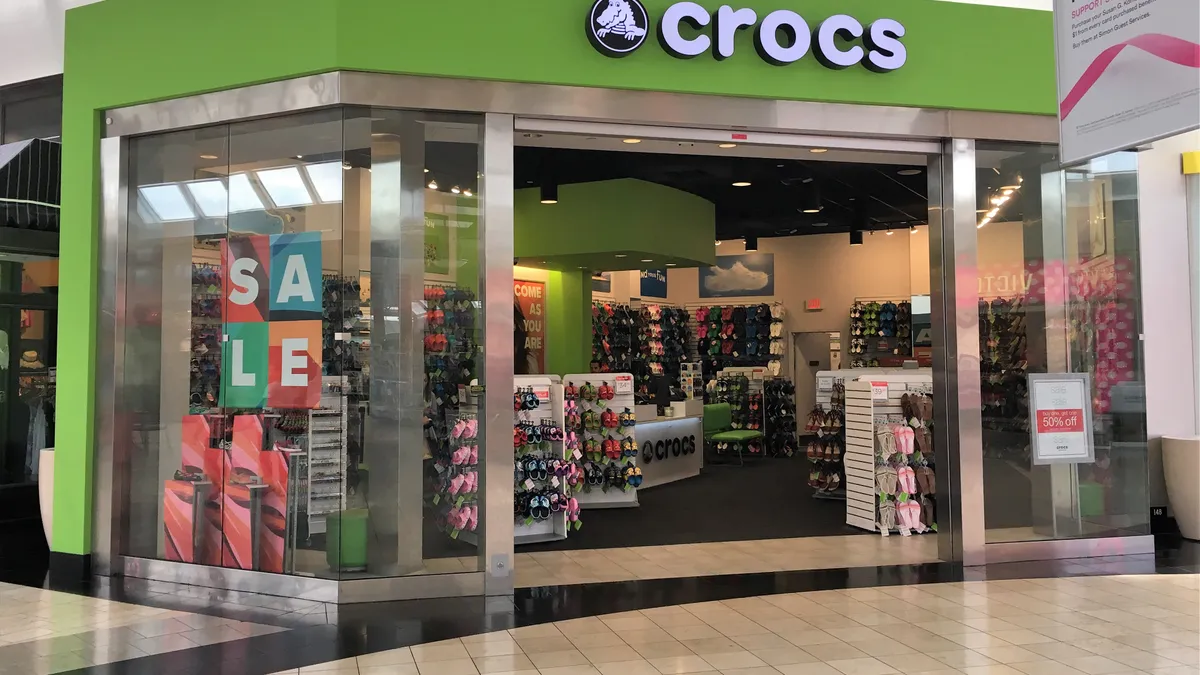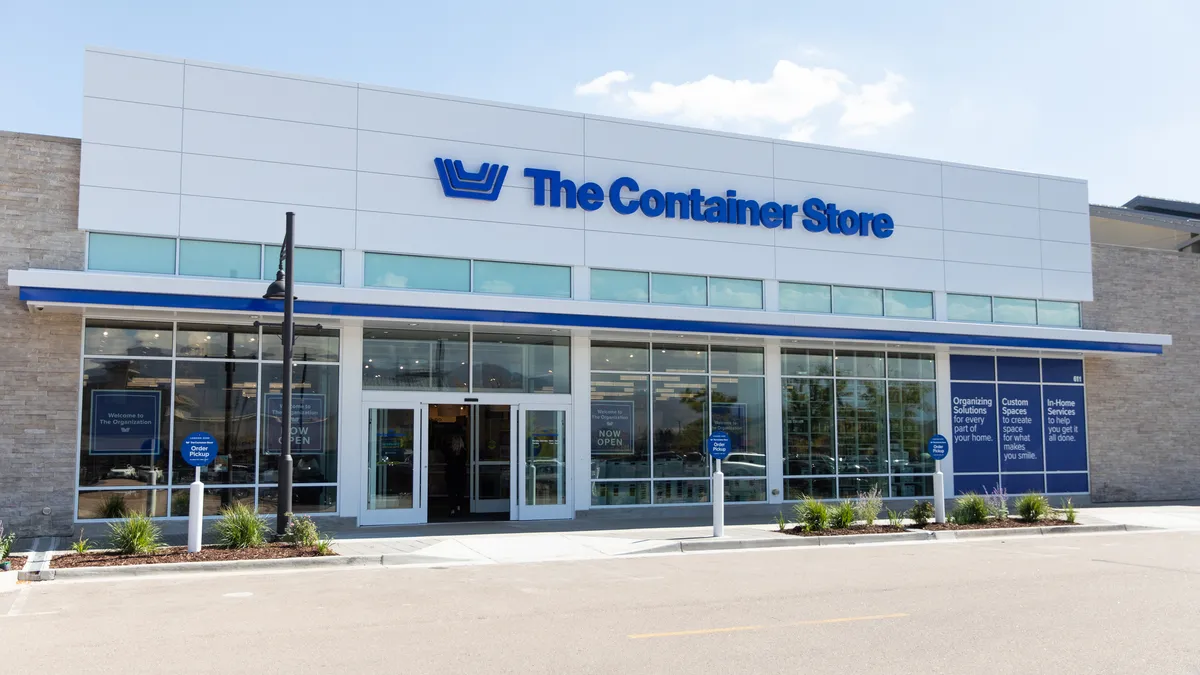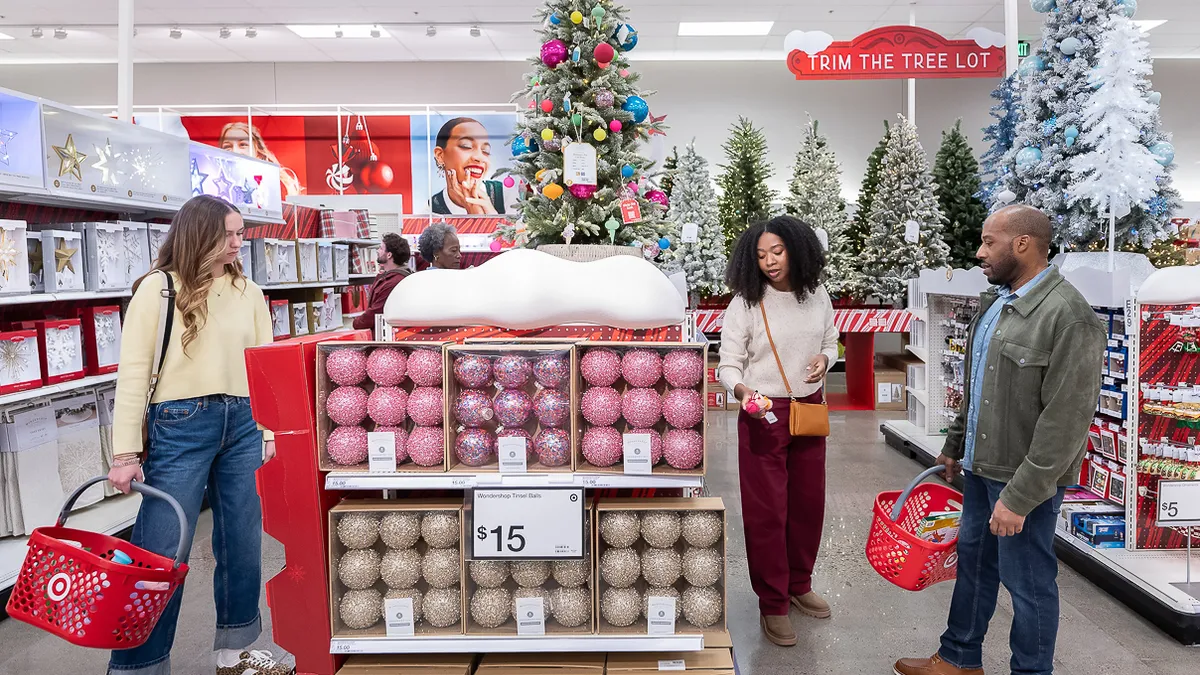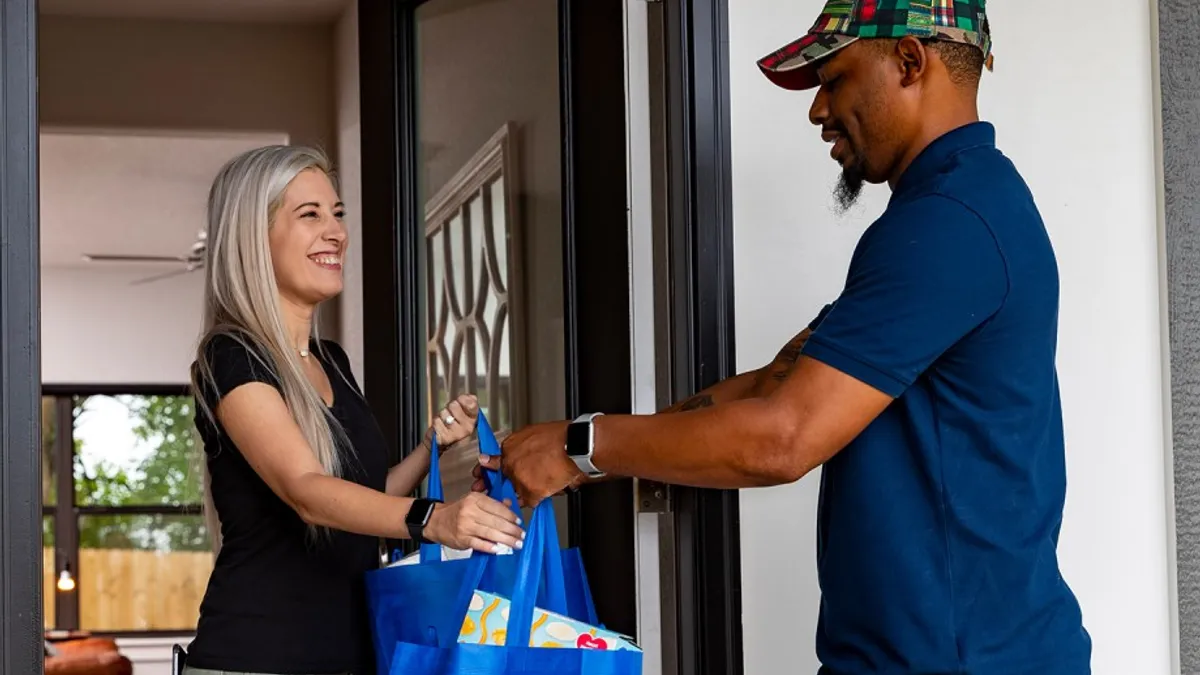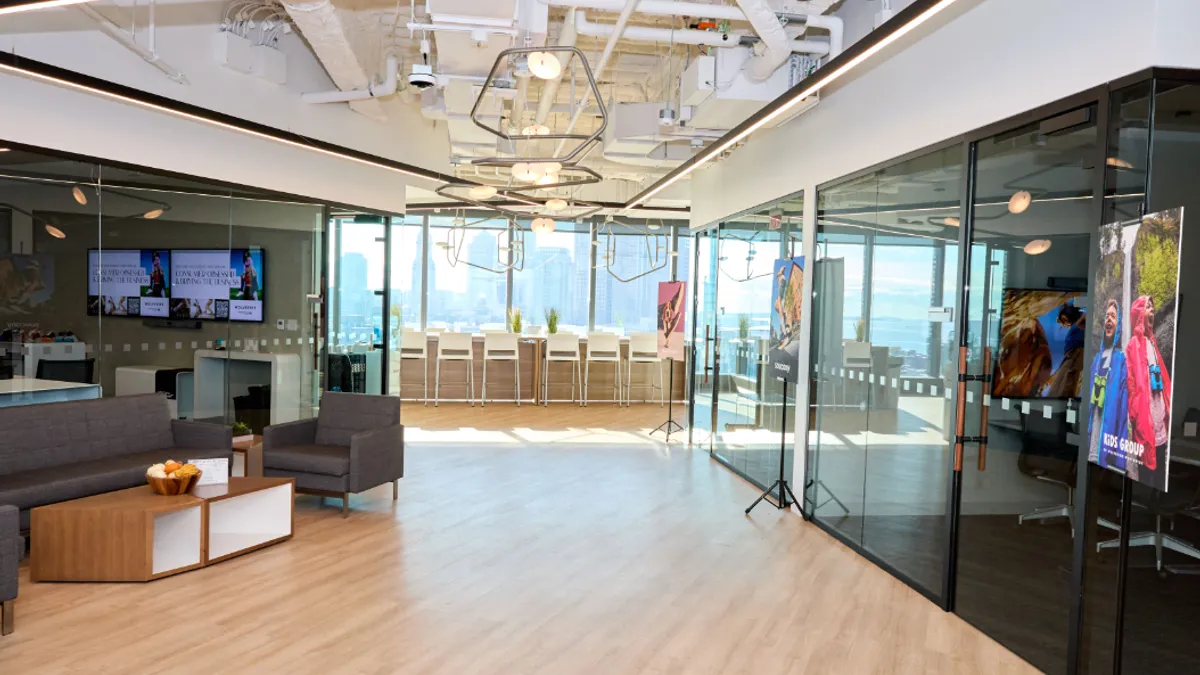The past 12 months or so have brought plenty of twists, turns and challenges for the retail world. In rough order the market has experienced booming sales and profits, supply chain bottlenecks and record inflation, followed by quickly collapsing consumer demand and sales.
What we have not seen much of since 2020 are retail bankruptcies and widespread distress.
Will that change in the new environment? Discretionary spending is constrained, interest rates are rising and margins are still under pressure from inflated operational costs.
For all of retail, the one-year default probability for publicly traded companies stood at 3.9% as of Aug. 15, according to data from S&P Global Market Intelligence provided to Retail Dive. The measure is largely a check on market signals, based primarily on share price volatility as well as total liabilities, and country and industry-related risks.
August’s aggregate default probability is down from 4.3% in May and June, when the metric peaked for retail. But it is still more than double the 1.9% default probability in December and nearly double the 2.1% probability in January, according to S&P data.

Another measure, CreditRiskMonitor’s Frisk scores — which use trading volatility, financial metrics and internal data from the company’s platform to calculate the probability of a company filing for bankruptcy within a year — show an increase in potential defaults as well since 2021.
Currently eight retail companies have a Frisk score of 1, indicating a 9.99% to 50% chance of filing, and another nine have a score of 2, indicating a 4% to 9.99% chance, according to data from CreditRiskMonitor. Last October, just three retailers in all had scores of 1 or 2.
What CreditRiskMonitor categorizes as high risk, or red zone companies —which includes a range of FRISK scores with a one-year bankruptcy risk running from 0.87% to 50% — has steadily increased this year. The number of retail companies in that range has increased from 72 in January to 105 in May to 121 in September, a number that is roughly equal to that the highest reading from the COVID-19 era in March 2020, according to CreditRiskMonitor data shared with Retail Dive.
Almost without doubt there is more risk in the market today than last year, mainly because last year was so good for the retail industry. Pulse Ratings CEO Dennis Cantalupo said that government stimulus and rebounding demand “made retailers look healthier than they actually were,” with many in the industry posting stellar numbers.
“It looked like everyone was executing well, and everyone was [saying], ‘We’re doing a great job managing our inventory and we’re not marking down,’” Cantalupo said. “Last year you didn’t mark down any goods because there was more demand than supply. Well, this year things reversed a little bit, so you’re right back to marking down goods again. So no one learned anything.”
Cantalupo added that he does see more risk today than last year, pointing to recent downgrades at Pulse on retailers including Tuesday Morning, Party City and Bed Bath & Beyond.
At the same time, Cantalupo suggested that the number of retailers at risk might be lower than just before the pandemic started. “Soon as the pandemic hit, all those companies on the fringe got pushed over,” he said. “It accelerated bankruptcies by about two years.”
Moreover, many in the industry responded to the disruption of COVID-19 by tightening up their finances, balance sheets and operations. “A lot of these companies during the pandemic took a close look at themselves and figured out, ‘Alright, what do we need to do to get through the rainy days or these events that could potentially unravel things,’” Cantalupo said. “They looked internally and got healthier.”
Others have observed the same phenomenon. “In general, we’ve seen more strengthening of companies than we might have thought,” said James Gellert, CEO and chairman of RapidRatings. That, notably, applies particularly to the largest companies in the industry. Those larger players have “more resources to be able to buy inventory and wait out market cyclicality, and better access to capital,” Gellert said.
For instance, RapidRatings’ Core Health Scores, which measure medium-term health and operational efficiency, have risen for Walmart, Target and Costco over the past 12 months and remain high for all three despite challenges with consumer demand and margins.
Size, Gellert noted, also allows retailers to absorb or push back on cost increases from suppliers. For small- and medium-sized companies, the story is different. Looking at a combination of short and medium term health scores, Gellert said that fewer small companies ($50 million a year in revenue and below) today are in a place of high risk, but more have moved into what RapidRatings designates as “quadrant B” — with better short term ratings that mask long-term deterioration.
Gellert said that data speaks to concerns he’s had for some time about what happens when “the shorter-term liquidity burns off for companies, and what's left is a longer-term operationally weakened business — that will cause a lot of problems.”
Where the risk is
Size matters when it comes to risk profile, as does sector and a company’s individual financial history.
For every sector save three the default probability was lower in mid-August than May, according to S&P Global Market Intelligence. The exceptions were department stores, specialty stores and apparel, for which risk increased.
Retailers have issued a slew of warnings about the impact inflation has had on shopping. Target was among the first to signal that high food and gas prices had put consumers into a defensive stance, lowering their spending on non-essentials, including apparel.
As the latest earnings roll in, many apparel retailers are posting declines. At Victoria’s Secret, sales tumbled 6% in Q2, and comps slid by 8%, while sales fell 7% at Abercrombie & Fitch, among other examples.
Even with other clothing retailers performing relatively well, uncertainty remains about the future if volatility persists.
Gellert pointed to J. Jill. After an out-of-court restructuring, the company “in many ways turned things around,” Gellert said. Following its Q1 report this year, RapidRatings gave the company a Financial Health Rating of 61 (out of 100), indicating low financial risk in the short run, and a Core Health Score (a measure of medium-term sustainability) of 63 out of 100. Both scores have been steeply upgraded over the past 12 months.
“What you don't necessarily know with J. Jill, and with others, is just how much improvement is going to be short-lived and how much is going to demonstrate systemic improvement,” Gellert said.
Another sector with relatively higher risks compared to the industry at large is e-commerce. Internet retail’s one-year default probability, at 7.8%, has only fallen slightly since May and remains the highest in the industry, according to S&P.
That also tracks with what the market has experienced over the past eight months of the year so far. E-commerce sales went rocketing up during the pandemic as consumers avoided in-person shopping. There was never clarity on where online sales would level out once pandemic trends faded.
It seems that demand has fallen short of plans for many in online retailing. Sales for many digitally native companies have been hit hard this year as consumers return to stores, pull back on discretionary spending and shift dollars to more experiential forms of spending with pandemic concerns easing among a large chunk of the population. According to tracking by Adobe, prices have been falling for online retail for the first time in two years.
Against that backdrop, Wayfair is back to operating at a loss, Amazon is scaling back expansion plans for its fulfillment centers, many one-time retail unicorns are hemorrhaging money, and several have announced layoffs this year in the DTC and e-commerce world. Rent the Runway — among those listed by S&P with the highest default probabilities in the sector — manged to double its revenue in Q1 but still added (modestly) to its net loss.
At 5.4%, home furnishing retail carries the next highest default probability among sectors, according to S&P. While that is down from a 6.3% default probability in May, the risk in the sector is still clear. At more than 25%, Kirkland’s default probability from S&P is among the highest in the industry.
Among the most prominent struggles is that of Bed Bath & Beyond, which has had a turbulent year so far. After posting strong results early in the pandemic, the home goods retailer has lost sales to supply chain shortfalls and more recently to consumer pullbacks. Sales in its most recent quarter fell 25%, with earnings being announced along with the exit of then-CEO Mark Tritton, whose splashy entrance from Target in 2019 prompted hope for a turnaround.
Bed Bath & Beyond has hired restructuring advisers to help with its balance sheet, and both Moody’s and S&P have given the company downgrades this summer over liquidity and default concerns.
RapidRatings has a Financial Health Rating of 28 (out of 100) for Bed Bath & Beyond, which indicates high risk and represents a drop of 40 points in the retailer’s rating from a year ago. (The rating was calculated prior to the company’s announcement of new financing and restructuring moves.)
What comes next for the market as a whole is open to speculation, especially after how forecasts and plans have been upended again and again during the pandemic era.
At least in the short term, despite some indications that spending is improving and consumers are getting some relief on fuel prices, more pain is likely ahead. Cantalupo pointed to a Q3 that is likely to be full of discounting, while 2023 could stabilize.
Or the rocky market could persist for longer. “My read of what our clients are indicating is they are bearing down for a longer period of volatility rather than preparing for a period of smooth sailing,” Gellert said. “You see that in economic data, even though you can look in economic data week to week and find things that are positive.”



